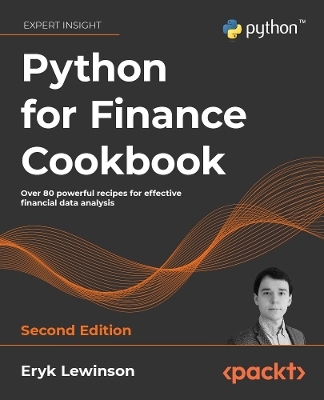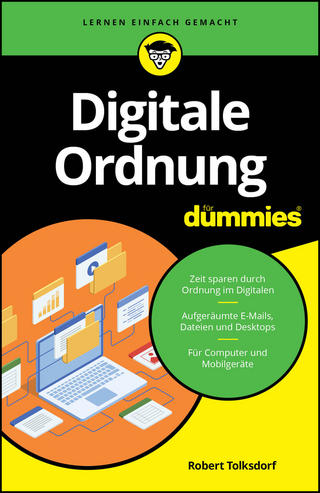
Python for Finance Cookbook
Packt Publishing Limited (Verlag)
978-1-80324-319-1 (ISBN)
Use modern Python libraries such as pandas, NumPy, and scikit-learn and popular machine learning and deep learning methods to solve financial modeling problems
Purchase of the print or Kindle book includes a free eBook in the PDF format
Key Features
Explore unique recipes for financial data processing and analysis with Python
Apply classical and machine learning approaches to financial time series analysis
Calculate various technical analysis indicators and backtest trading strategies
Book DescriptionPython is one of the most popular programming languages in the financial industry, with a huge collection of accompanying libraries. In this new edition of the Python for Finance Cookbook, you will explore classical quantitative finance approaches to data modeling, such as GARCH, CAPM, factor models, as well as modern machine learning and deep learning solutions.
You will use popular Python libraries that, in a few lines of code, provide the means to quickly process, analyze, and draw conclusions from financial data. In this new edition, more emphasis was put on exploratory data analysis to help you visualize and better understand financial data. While doing so, you will also learn how to use Streamlit to create elegant, interactive web applications to present the results of technical analyses.
Using the recipes in this book, you will become proficient in financial data analysis, be it for personal or professional projects. You will also understand which potential issues to expect with such analyses and, more importantly, how to overcome them.
What you will learn
Preprocess, analyze, and visualize financial data
Explore time series modeling with statistical (exponential smoothing, ARIMA) and machine learning models
Uncover advanced time series forecasting algorithms such as Meta's Prophet
Use Monte Carlo simulations for derivatives valuation and risk assessment
Explore volatility modeling using univariate and multivariate GARCH models
Investigate various approaches to asset allocation
Learn how to approach ML-projects using an example of default prediction
Explore modern deep learning models such as Google's TabNet, Amazon's DeepAR and NeuralProphet
Who this book is forThis book is intended for financial analysts, data analysts and scientists, and Python developers with a familiarity with financial concepts. You'll learn how to correctly use advanced approaches for analysis, avoid potential pitfalls and common mistakes, and reach correct conclusions for a broad range of finance problems.
Working knowledge of the Python programming language (particularly libraries such as pandas and NumPy) is necessary.
Eryk Lewinson received his master's degree in Quantitative Finance from Erasmus University Rotterdam. In his professional career, he has gained experience in the practical application of data science methods while working in risk management and data science departments of two "big 4" companies, a Dutch neo-broker and most recently the Netherlands' largest online retailer. Outside of work, he has written over a hundred articles about topics related to data science, which have been viewed more than 3 million times. In his free time, he enjoys playing video games, reading books, and traveling with his girlfriend.
Table of Contents
Acquiring Financial Data
Data Preprocessing
Visualizing Financial Time Series
Exploring Financial Time Series Data
Technical Analysis and Building Interactive Dashboards
Time Series Analysis and Forecasting
Machine Learning-Based Approaches to Time Series Forecasting
Multi-Factor Models
Modelling Volatility with GARCH Class Models
Monte Carlo Simulations in Finance
Asset Allocation
Backtesting Trading Strategies
Applied Machine Learning: Identifying Credit Default
Advanced Concepts for Machine Learning Projects
Deep Learning in Finance
| Erscheinungsdatum | 03.01.2023 |
|---|---|
| Verlagsort | Birmingham |
| Sprache | englisch |
| Maße | 75 x 93 mm |
| Themenwelt | Mathematik / Informatik ► Informatik ► Datenbanken |
| Informatik ► Office Programme ► Outlook | |
| Mathematik / Informatik ► Informatik ► Theorie / Studium | |
| Wirtschaft ► Betriebswirtschaft / Management ► Finanzierung | |
| ISBN-10 | 1-80324-319-8 / 1803243198 |
| ISBN-13 | 978-1-80324-319-1 / 9781803243191 |
| Zustand | Neuware |
| Haben Sie eine Frage zum Produkt? |
aus dem Bereich


